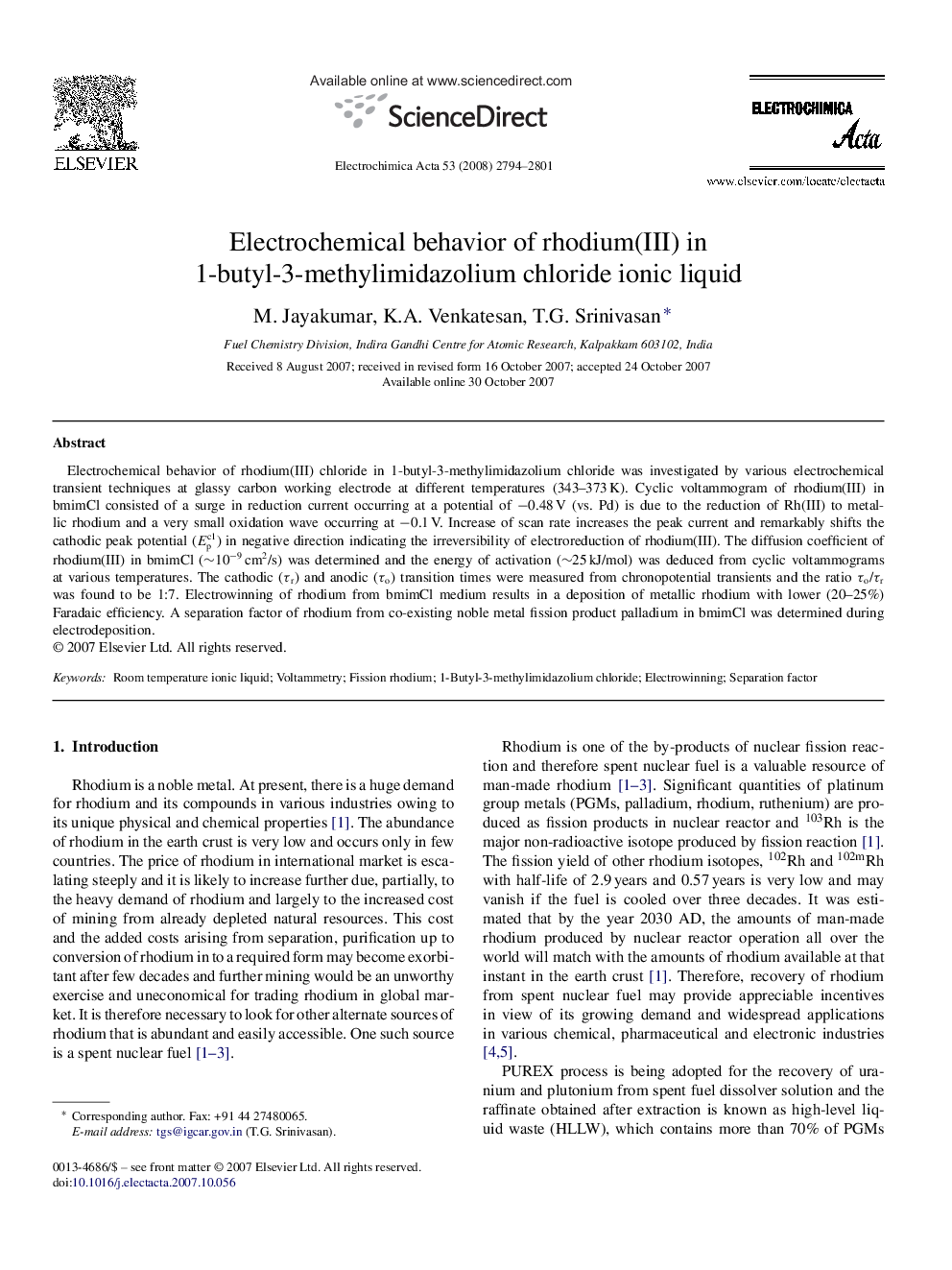| Article ID | Journal | Published Year | Pages | File Type |
|---|---|---|---|---|
| 193564 | Electrochimica Acta | 2008 | 8 Pages |
Electrochemical behavior of rhodium(III) chloride in 1-butyl-3-methylimidazolium chloride was investigated by various electrochemical transient techniques at glassy carbon working electrode at different temperatures (343–373 K). Cyclic voltammogram of rhodium(III) in bmimCl consisted of a surge in reduction current occurring at a potential of −0.48 V (vs. Pd) is due to the reduction of Rh(III) to metallic rhodium and a very small oxidation wave occurring at −0.1 V. Increase of scan rate increases the peak current and remarkably shifts the cathodic peak potential (Epc1) in negative direction indicating the irreversibility of electroreduction of rhodium(III). The diffusion coefficient of rhodium(III) in bmimCl (∼10−9 cm2/s) was determined and the energy of activation (∼25 kJ/mol) was deduced from cyclic voltammograms at various temperatures. The cathodic (τr) and anodic (τo) transition times were measured from chronopotential transients and the ratio τo/τr was found to be 1:7. Electrowinning of rhodium from bmimCl medium results in a deposition of metallic rhodium with lower (20–25%) Faradaic efficiency. A separation factor of rhodium from co-existing noble metal fission product palladium in bmimCl was determined during electrodeposition.
